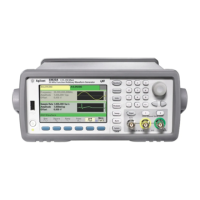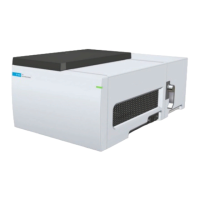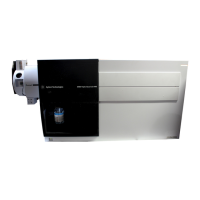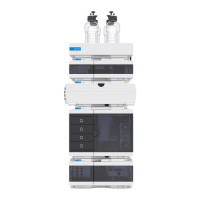245
Chapter 5 Tutorial
Arbitrary Waveforms
4
5
Waveform Filters The instrument includes two filters to smooth the
transitions between points as arbitrary waveforms are generated. The
Normal filter setting gives a wide, flat frequency response, but its step
response exhibits overshoot and ringing. The Step setting gives a nearly
ideal step response, but it has more roll-off in its frequency response
than the Normal filter.
Each filter’s cutoff frequency is a fixed fraction of the waveform’s sample
rate. The Normal filter’s response is -3 dB at 27% of the sample rate and
the Step filter’s response is -3 dB at 13% of the sample rate. For example,
if you are playing an arbitrary waveform at 100 MSa/s, the Normal
filter’s -3 dB frequency bandwidth is 27 MHz.
If you turn filtering off, the output changes abruptly between points,
with a transition time of approximately 10 ns.
Waveform Sequencing The Agilent 33500 Series can assemble long,
complex waveforms from smaller waveforms. The user-definable
program that specifies how to do this is called a sequence, and the
smaller waveforms are called segments. Switching between segments
occurs seamlessly in real time. As an analogy, think of segments as songs
in a music player and sequences as play lists.
Each step of a sequence specifies a segment and how many times it is
played. It also specifies whether the sequence waits for a trigger before
the next step and how the Sync signal is generated on a step-by-step
basis.
For each step in the sequence, you can do one of the following:
• play the selected segment from 1 to 1,000,000 times and then advance
to the next step
• play the selected segment once and then stop and wait for a trigger
before advancing
• repeat the selected segment until a trigger occurs and then advance
• repeat the selected segment until explicitly stopped
Options for Sync signal generation include:
• assert Sync at the beginning of the segment
• negate Sync at the beginning of the segment
• maintain the current Sync state throughout the segment
• assert Sync at the beginning of the segment and negate it at a defined
point within the segment.

